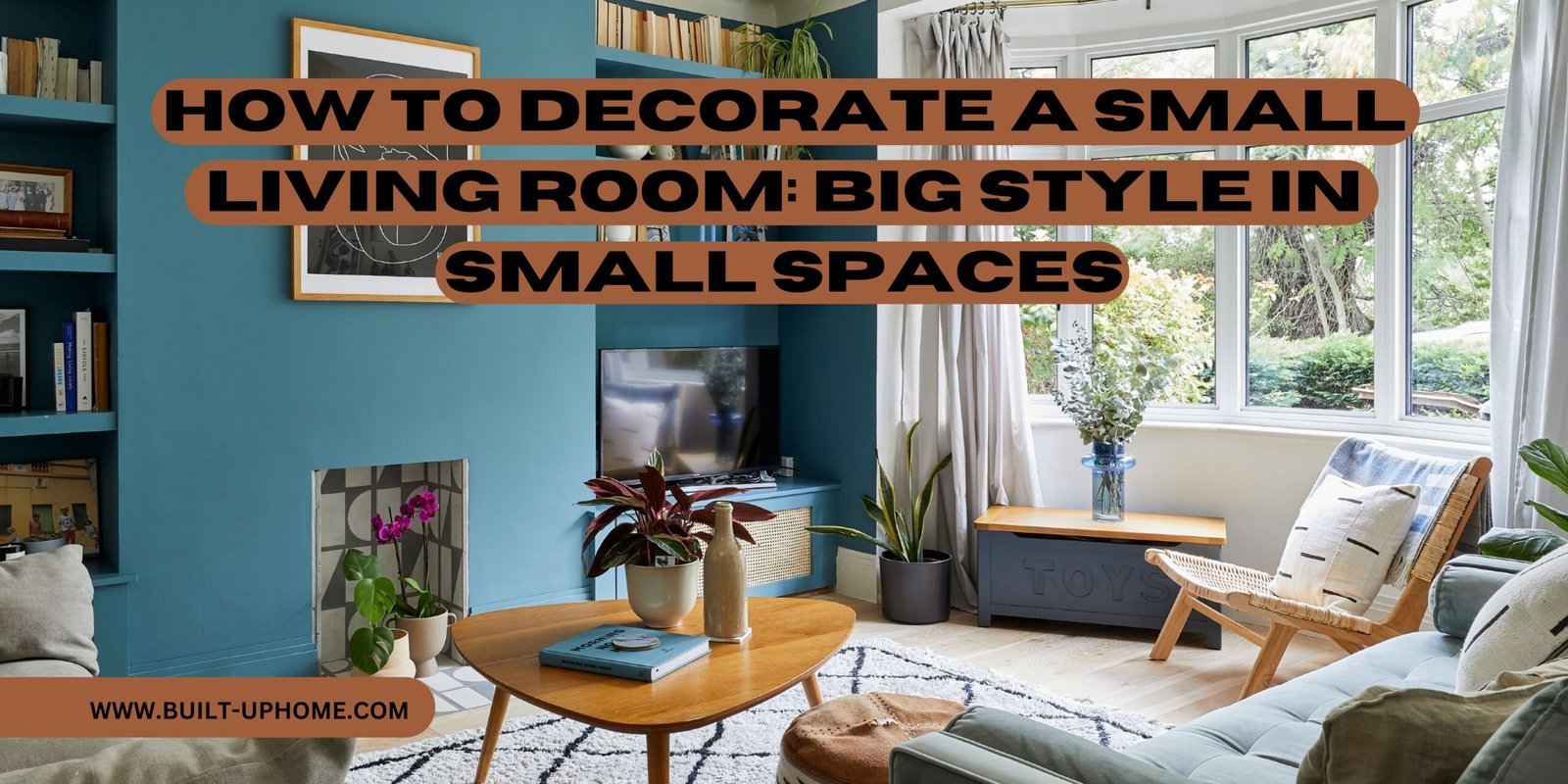Decorating a small living room might feel like a challenge, but it’s actually an opportunity to get creative and intentional with your space. With the right design strategies, you can make even the coziest room feel open, stylish, and functional. Whether you’re working with a compact apartment, a studio, or a small family room, the key is to blend function and style seamlessly. Here’s how you can decorate your small living room like a pro.
1. Start With a Clear Plan
Before buying anything or moving furniture, take time to plan. Measure your space carefully, noting any architectural features, windows, and doors. Create a simple floor plan—there are plenty of free apps for this—or sketch one on paper. Decide what functions your living room needs to serve. Is it mainly for relaxing and watching TV? Do you need it to double as a home office or guest space?
By knowing your needs and limits, you’ll be able to make smarter design choices that fit your lifestyle and space.
2. Choose the Right Furniture
In a small living room, scale is everything. Bulky furniture will overwhelm the space, making it feel cramped. Instead, opt for slim-profile, multi-functional furniture. Here are some space-saving furniture ideas:
- Loveseats or apartment-size sofas instead of full sectionals.
- Storage ottomans that can also serve as coffee tables.
- Nesting tables or folding trays that you can tuck away when not needed.
- Wall-mounted shelves or floating TV units to save floor space.
Furniture with visible legs and lighter frames also creates a sense of openness, unlike heavy pieces that sit flat on the floor.
3. Embrace Light and Neutral Colors
Rooms can feel more spacious and open when light colors are used. Consider whites, creams, soft grays, or pale pastels for your walls, ceiling, and even furniture. This doesn’t mean your space has to be boring—layer in textures with cushions, throws, rugs, and curtains to add depth and interest.
If you love bold colors or dark tones, use them as accents—such as in artwork, a statement chair, or a single wall—to create contrast without overwhelming the room.
4. Use Mirrors Strategically
Mirrors are one of the time-tested strategies for designing small spaces, and there’s a good reason for that. They mirror light and create the illusion of a bigger area. To reflect light throughout the room, try positioning a large mirror across from a window. You can also create a mirrored gallery wall or choose mirrored furniture pieces for a sleek, modern look.
5. Maximize Vertical Space
When you can’t spread out, go up. Use your vertical space to its full potential with tall bookshelves, wall-mounted lighting, or high-hung curtains. Hanging curtains closer to the ceiling, rather than directly above the window, draws the eye upward and makes the room feel taller.
You can also consider wall-mounted desks, pegboards for organization, or tall plants to add life without eating up floor space.
6. Define Zones with Rugs
If your small living room shares space with another area—like a dining nook or office corner—use area rugs to define zones. A well-placed rug can anchor your seating area and visually separate it from the rest of the space. Choose rugs that are proportional to your furniture to avoid making the room feel even smaller.
7. Layer Lighting
Relying on a single overhead light can flatten a small space. Instead, use layers of lighting to add warmth and dimension. Combine:
- Ambient lighting: ceiling lights, pendant lamps
- Task lighting: floor lamps, reading lights
- Accent lighting: wall sconces, LED strips, candles
Table lamps and wall-mounted lights free up floor space and add personality at eye level.
8. Keep It Clutter-Free
Clutter is the enemy of small spaces. Adopt a “less is more” mindset. Every item in the room should have a purpose or bring joy. Store items you don’t use regularly out of sight, and make the most of hidden storage options—like under-sofa baskets, coffee tables with compartments, or built-ins.
Decorative trays or baskets are a great way to corral loose items like remotes, magazines, or coasters while still looking stylish.
9. Add Personality with Art and Accessories
Just because your space is small doesn’t mean it can’t reflect your personality. Art is a great way to express yourself without taking up physical space. Hang a statement piece, create a gallery wall, or lean framed art on floating shelves.
Throw pillows, books, candles, and small plants can also add charm—just be sure not to overcrowd surfaces.
10. Go for Built-Ins or Custom Solutions
If your budget allows, custom built-ins can be a game changer in a small living room. A built-in entertainment unit, bookshelf, or window seat can make every inch count while adding architectural interest and functionality.
Even affordable, modular shelving systems from IKEA or similar brands can be customized to create a high-end look without the high-end price tag.
Bonus Tips:
- Keep walkways clear: Make sure there’s space to move around comfortably.
- Use glass or acrylic furniture: These pieces “disappear” visually, making the room feel less crowded.
- Rotate décor seasonally: Swap out accessories to keep things fresh without adding clutter.
Final Thoughts
Decorating a small living room doesn’t mean sacrificing style or comfort—it just means getting smart with your design choices. With a thoughtful layout, the right furniture, and clever storage solutions, you can turn your compact space into a cozy, functional, and stylish retreat that feels much bigger than it is.
Whether you’re embracing a minimalist look or a cozy eclectic vibe, the key is to make every piece count and let your personality shine through. After all, small can still be spectacular.
Read More Detailed About: Built UP Home
Modern Dressing Table Designs for Bedroom with Price

